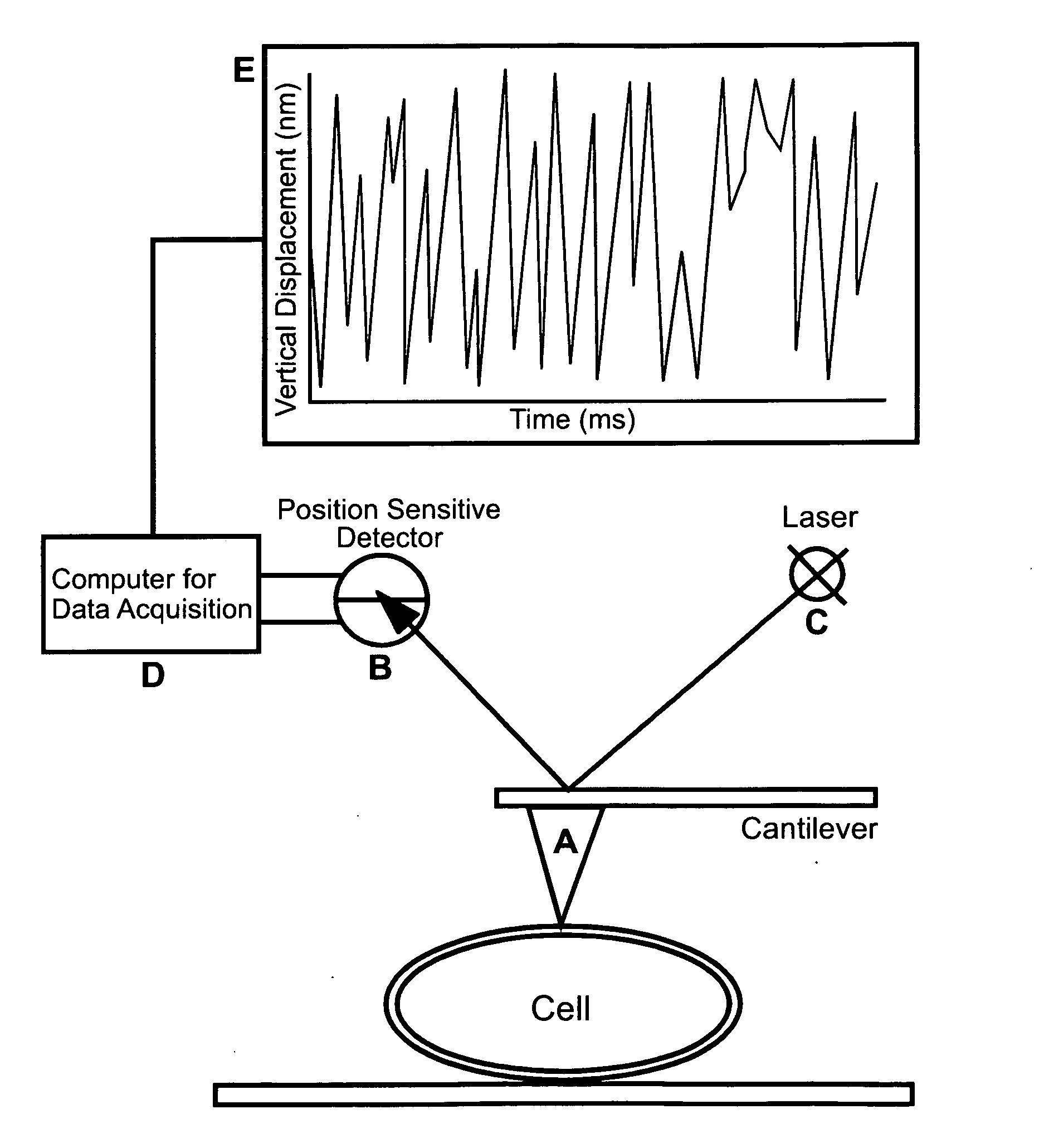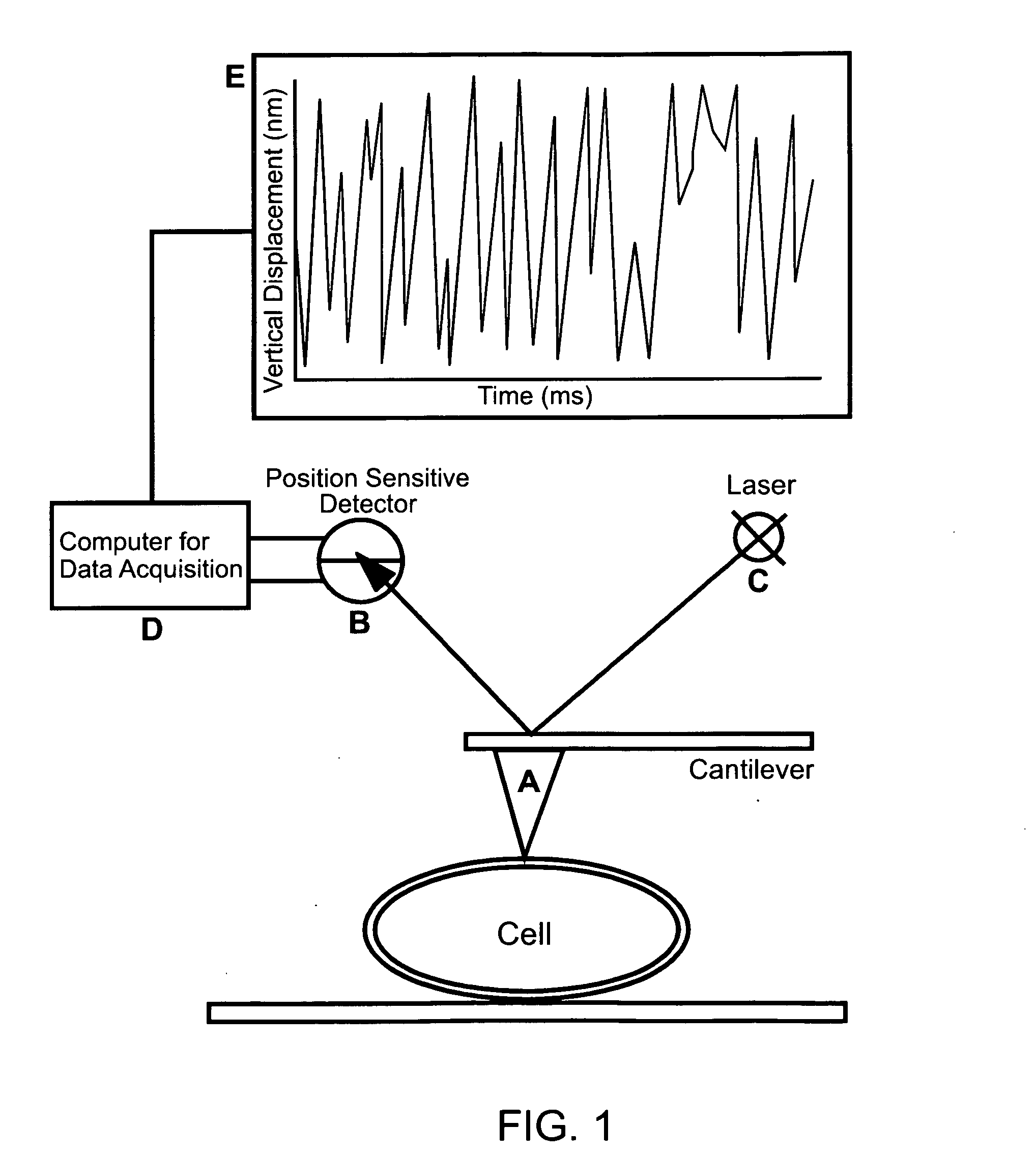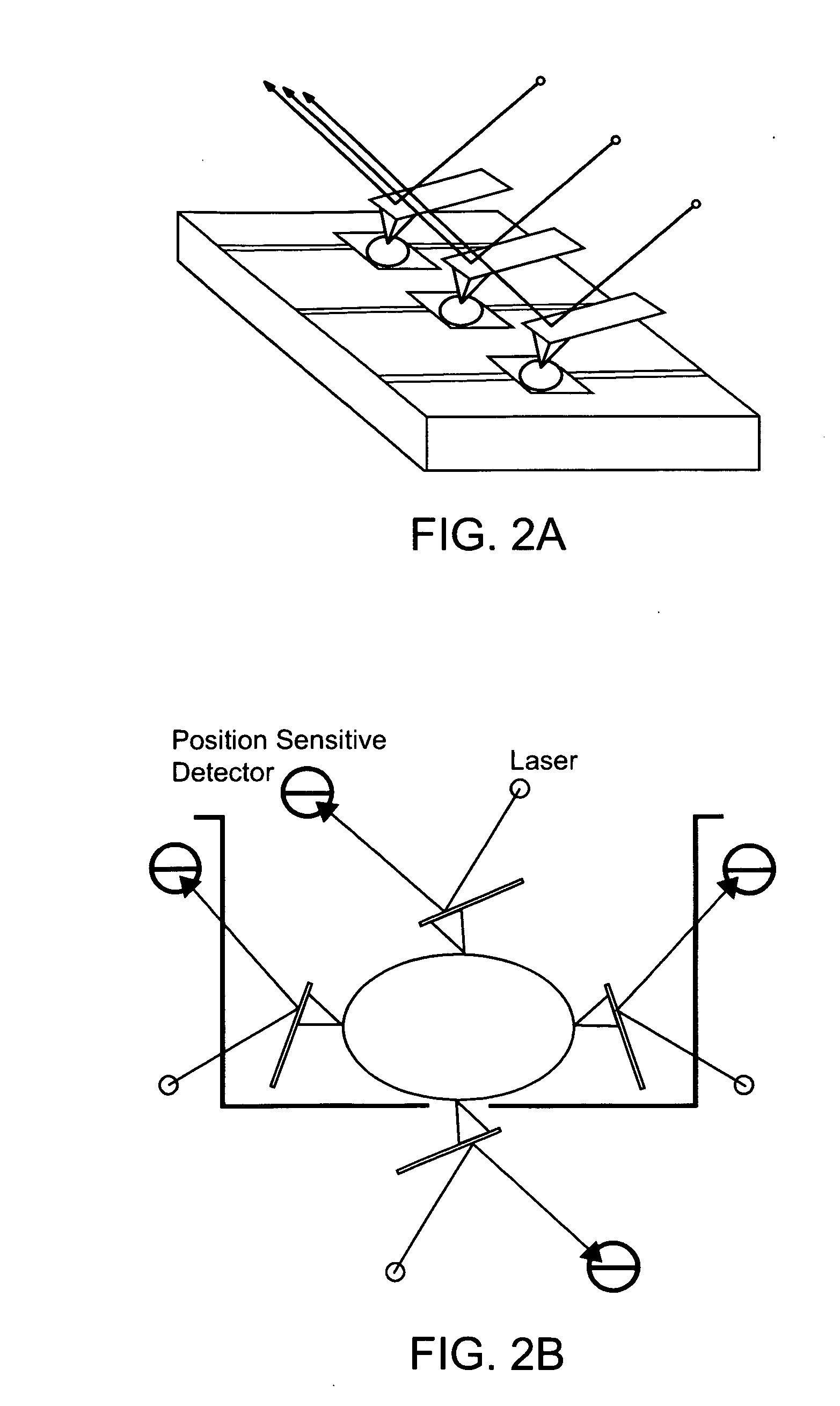Methods and devices for determining a cell characteristic, and applications employing the same
a cell characteristic and cell technology, applied in the field of cell physiology and cell membranes, can solve problems such as complex cell systems
- Summary
- Abstract
- Description
- Claims
- Application Information
AI Technical Summary
Benefits of technology
Problems solved by technology
Method used
Image
Examples
example 1
Use of AFM to Determine a Cell Characteristic
Materials and Methods
Yeast Strains and Growth Conditions
[0145] The Saccharomyces cerevisiae strains used are BY4741 (MATa his3 leu2 met15 ura3), W303.1B (MAT a ade2-1, his3-11, 15, leu2-3, 112, trp1-1, ura3-1) and CC304.1 (W303.1B-atp2Δ2:LEU2), which is a respiratory-deficient mutant strain. Cells were grown in YPD medium (2% peptone, 1% yeast extract, and 2% glucose) incubated at 30° C. with shaking at 220 rpm, and grown for 16 to 20 hours (Kaiser et al. (1994) Cold Spring Harbor Laboratory Press, Cold Spring Harbor, N.Y.).
[0146] All measurements were made with a Nanoscope IV (Bioscope, Veeco Digital Instruments, Santa Barbara) using a fluid cell. In most experiments SiN4 triangular cantilevers (0.06 N / m spring constant) were used. Cantilevers with 0.12 N / m spring constants were also used to discriminate against experimental artifacts that might be associated with the cantilever spring constant. Sensitive m...
example 2
Use of Quantum Nanomirrors to Determine a Cell Characteristic
[0157] As depicted in FIG. 8, a quantum nanomirror 10 is attached to a cell surface of a cell 20 in a sample. A laser beam (incident beam 30) scans the sample, locates the mirror reflector surface 11 by reflection (reflected beams 40) onto a high resolution CCD array. The laser then follows the motion of the cell membrane through the beam deflection technique in real time. The data recorded are compared to a database using advance neural network analysis such as developed by DARPA for speech recognition. The system can be used to classify and study the effects of small molecules and biological agents; and can also be used for drug development.
[0158]FIG. 9 presents a top view of a quantum nanomirror 10. The micron-sized silicon, PDMS, or SiNx disk has an optical grating texture 14 that diffracts light. In FIG. 9, cell attachment moieties 13 are shown, that provide for attachment of the quantum nanomirror to the cell surfa...
PUM
 Login to View More
Login to View More Abstract
Description
Claims
Application Information
 Login to View More
Login to View More - R&D
- Intellectual Property
- Life Sciences
- Materials
- Tech Scout
- Unparalleled Data Quality
- Higher Quality Content
- 60% Fewer Hallucinations
Browse by: Latest US Patents, China's latest patents, Technical Efficacy Thesaurus, Application Domain, Technology Topic, Popular Technical Reports.
© 2025 PatSnap. All rights reserved.Legal|Privacy policy|Modern Slavery Act Transparency Statement|Sitemap|About US| Contact US: help@patsnap.com



